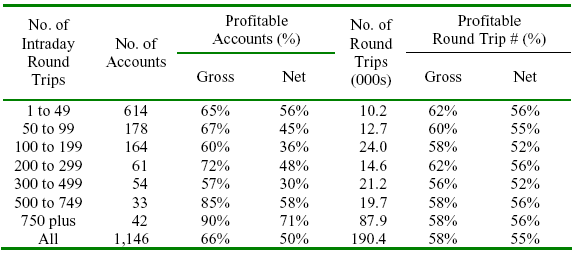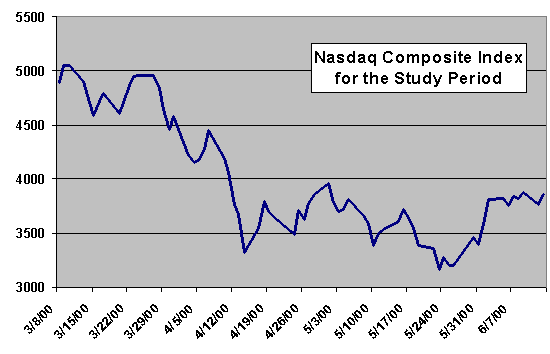How active are active traders? What are the odds that an active trader will make a profit? How are winners different from losers? In their recent paper entitled “The Profitability of Active Stock Traders”, Ryan Garvey and Anthony Murphy examine the outcomes for a large group of active traders over a three-month period. Using data for over 400,000 trades by 1,386 day traders from a direct access broker in the U.S. over the period March 8, 2000 through June 13, 2000 (68 trading days), they find that:
- Trading involved mostly large-capitalization Nasdaq stocks.
- Traders are most active in the morning and least active at midday, with 80% of all positions closed out intraday. Most trades are via limit orders.
- About 55% of all round-trip trades and about 50% of the 1,386 day traders make a profit after commissions. Some traders consistently make large net profits.
- All traders have trouble making a profit when market makers are involved in the transactions. Profitable trading goes through ECNs.
- The characteristics of profitable and unprofitable traders are very similar, including time of day, exchange used and stocks traded. The data is insufficient to distinguish clearly between luck and skill, although there is consistency of winners and losers across different stocks.
- Results suggest that relatively skilled day traders take money from relatively unskilled day traders in a zero-sum game.
The following table, taken from the paper, shows the percentage of trading accounts and round-trip trades that were profitable before (gross) and after (net) commission. It ranks accounts by number of intraday round-trip trades conducted over the sample period (1,146 of the 1,386 accounts in the dataset engaged in at least one intraday round-trip). The data thinly suggests that the most and least active accounts tend to be the most profitable.

For context, the following chart shows the behavior of the Nasdaq Composite Index during the three-month period of the study, which included a sickening drop of nearly 40%. The traders in this group must have engaged in considerable short selling to achieve the level of success recorded. It would be interesting to measure the performance of the same group during the immediately preceding three months when the index rose dramatically. Were they adaptively trading long during that prior run-up, or losing big trying to call a top?

In summary, this evidence suggests that the average day trader breaks even and that the most active traders may be the most successful.